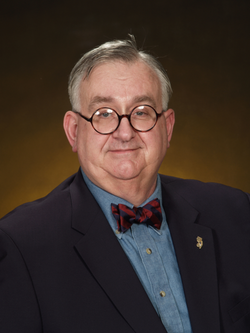We here in the Respondersafety.com family have been chipping away at the problems which have been injuring and killing fire, police, , and tow truck drivers for quite some time now. As you will note, we have expanded our focus to include certain non-emergency personnel who work with us on a daily basis.
It is hard to believe that more than a decade has passed since the publication of our defining document, "Protecting Emergency Responders on the Highways." I recall the events of that exciting time as though they were yesterday. It is hard to believe the number of places to which we traveled pitching our message of highway safety.
It is important to note that we started our with two specific problem statements which served as the foundation for the development of the recommendations:
- There is lack of consistency, agreement, and understanding of the minimum competencies (knowledge, skills, and abilities) necessary for all emergency services personnel operating in or near moving traffic;·
- The general public lacks understanding of the role of emergency service personnel engaged in traffic control. Even their own colleagues in the fire, , law enforcement, and other emergency services sometimes fail to appreciate the serious hazards routinely faced by those engaged in traffic control duties.
My friends, we set out on our journey with some lofty goals in mind. Here are a few of the many things which we sought to do:
- An analysis of the tasks we perform out on the highways
- Improved operating procedures
- Better training
- Use existing resources and best practices
- Create an awareness of our duties as part of an overall operation
- Develop model standard operating procedures (SOP's)
- Support the use of warning signs and devices to better protect personnel operating on the highways of
- Work to improve the quality and quantity of high-visibility, retro-reflective garments by emergency service personnel
- Develop the use of a highway safety incident command system (ICS)
- Move to support the creation of legislation which affords better protection to personnel engaged in highway operations
- Support the enactment of "Move Over" laws to protect our personnel
- Develop model procedures for the creation and use of auxiliary traffic control units on the order of Fire Police-style units in the Northeast
- Become a part of the existing standards making systems so that our specialized knowledge can become a part of the various standards which directly impact our operation
- Work to support research in areas which impact highway safety issues
- Support the need for baseline and periodic physicals for all emergency response personnel assigned to highway safety duties
- Inject our ideas, concepts, and knowledge into the public education systems which impact drivers in our nation
- The need exists to develop aggressive public education programs to develop an awareness of our issues among the driving public
Let me assure that strides have been made in most of these areas. One need only look at the recent approval of the public safety vest as a part of the equipment ensemble of emergency responders across our nation. Thanks to the efforts of our association, basic highway safety practices are now a part of the National Fire Protection Association Professional Qualification Standard for Firefighters.
Our association has moved to the forefront of this critical safety issue. My friends, we are about to make another critical step upward in our ability to impact emergency response personnel all across our nation. Steps have been taken to create a new proposed National Fire Protection Association technical committee and on professional qualifications for emergency responders working on roadways. If approved by the NFPA, an official standard would be created to address the proper ways of operating out on the highways at emergency incidents. This has long been one of our hopes and dreams.
My friends, you can play a critical role in the actual creation of this new standard. The Standards Council of the National Fire Protection Association is asking for written letters of support for this new standard. We would urge you to send a letter supporting our efforts to create this new standard. If you are writing on behalf of an organization, please be sure that your letter is sent on official stationary. The address is:
Linda J. Fuller, Manager
Codes and Standards Administration
National Fire Protection Association
1 Batterymarch Park
Quincy,MA 02269-7471
The Respondersafety.com website has become the gateway to a wide variety of educational and support resources. Much is available to assist people in developing their own programs, procedures, and policies for safety operations on the highways and byways of our nation. All you need to do is look.
We have also devoted countless hours and resources to the creation of model programs, DVD's, and the training of personnel around the country. Our folks have become a part of the educational delivery systems at all of the major fire service conferences (and a number of state and regional conferences and conventions). We have shown the flag far and wide for more than a decade.
Perhaps you have heard that patience is a virtue. It is more than that. It is a primary requirement for all who choose to participate in a laudable undertaking. We want to assure you that we here at the Emergency Response safety Institute and Respondersafety.com are going to continue our pursuit of our goal of a safer highway operating environment. Please help us by using our methods and training materials to provide a safer environment for your people.


